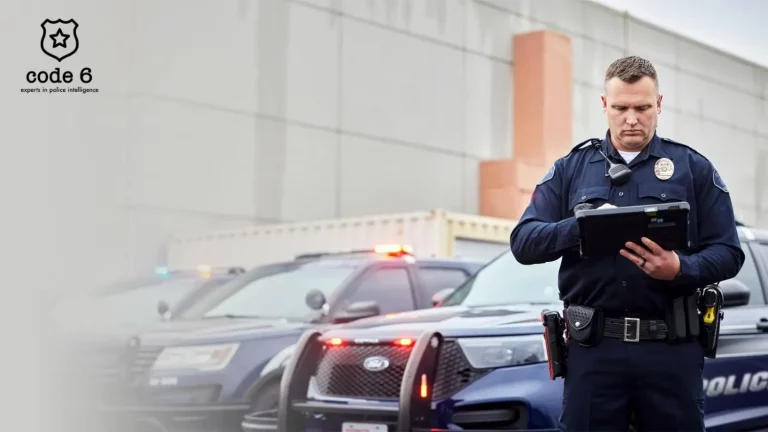Introduction
The modern era has made data an indispensable tool for law enforcement. However, once data is trapped in isolated systems or silos, sharing and analyzing such data is cumbersome and leads to inefficiencies in police investigation, crime prevention, and decision faculties. Dismantling these data silos will foster collaboration among law enforcement agencies for better public safety and informed decision-making.
What Are Data Silos in Law Enforcement?
In insular systems across departments where information is difficult to access- various reasons account for this:
☑ Outdated IT systems that do not interface with more modern software solutions;
☑ Lack of coordination between police units across departments;
☑ Restricted access policies limiting what can be shared;
☑ Incompatible databases storing data in different formats.
The Consequences of Data Silos:
- The investigations are sluggish – Time loss in accessing critical data impacts case flow.
- The Loss of Crime Patterns – Predictive policing cannot exist without data integration.
- Duplication of Work – Officers are wasting time re-entering the same data into multiple systems.
- Limited Intelligence Sharing – Cooperation can be a challenge between agencies.
- Security Risks – The increased risk of breach by the poorly coordinated management of data.
Key Strategies to Break Down Data Silos
1. Implement Centralized Data Management Systems
Opt for cloud data-sharing services for efficient information flow.
✔ Consistency in data formats prompts easy integration and retrieval..
2. Foster Inter-Agency Collaboration:
Formulate standard and secure data-sharing agreements that will include every police department.
✔ Create a national criminal database accessible by all enforcement agencies.
3. Utilize Advanced AI & Analytics
Using AI tools for pattern recognition in crime trends.
✔ Use predictive policing models to shorten response time.
4. Enhance Officer Training & Data Literacy
Conduct workshops on the use of data and collaboration between departments.
✔ Encourage officers to employ data in their day-to-day decisions.
5. Strengthen Cybersecurity & Compliance
Implement role-based access controls to protect data.
✔ Ensure compliance with applicable privacy laws as well as ethical standards.
How The Code Six Helps Law Enforcement Overcome Data Silos:
The Code Six is a revolutionary data integration platform for law enforcement agencies. It:”
✔ Integrates data from different sources in a unified view with eradication of duplicates.
✔ Provides information in real-time for officers to act fast.
✔ Improves crime analysis by providing AI-driven insights.
✔ Ensures data security and compliance with regulations.
Thus, police departments will be able to achieve greater efficiency, speed up investigations, and strengthen crime prevention measures through The Code Six.
Case Studies: Successful Data Integration in Policing
🚔 The NYPD has implemented a singular crime data system that has cut down the investigation time by 40%.
🚔 The London Metropolitan Police used AI-based data analysis to predict crime hotspots and reduce violent crime.
🚔 In the LAPD, real-time data sharing has been implemented to increase cooperation between agencies.
The Future of Data-Driven Policing:
By way of evolution in big data, AI, and real-time analytics, police agencies are coming closer to digitally integrated systems. Within the future, one can foresee:
✔ AI predictive models helping in prevention of crimes.
✔ Data-sharing on Blockchain for maximum security and transparency.
✔ Interlinked nationwide databases making investigations simple.
Through today’s breaking of silos, Law Enforcement can bring Big Change in Policing tomorrow.
Conclusion
The existence of isolated databases creates hurdles and inefficiencies for investigations, besides limiting collaboration among officers. A centralized data system with AI-based analytics and securely shared data policies is important for maximizing data functionality in law enforcement for public welfare.
The dispersion of silos is not only a technological change-it also goes into the domain of cultural change that brings an organization to collaborate across boundaries, cultivate transparency, gain efficiency. 🚔📊
FAQs
1. What is the biggest challenge in breaking down data silos?
Also resistant to change within the organization, these obstacles are also the legacy systems that fail to interface with modern technologies.
2. How does breaking down data silos improve investigations?
“It gives officers immediate access to critical data, enables tracking crime patterns more efficiently, and facilitates increased departmental collaboration.”
3. Do agencies need to invest in expensive technology to eliminate silos?
Many inexpensive cloud solutions are available that connect existing systems without a total overhaul.
Final Thought: Modern data-driven policing will be achieved through breaking down silos. By adopting integrated solutions today, agencies will improve law enforcement outcomes sooner.




